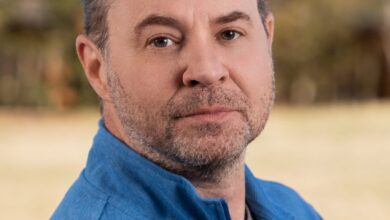DuVine is an international cycling and adventure company that curates what they call “unforgettable travel experiences.” DuVine’s luxury bike tours focus on exceptional food and wine. The vision for a DuVine tour is to experience authentic character and connections across cultures. The guides are said to understand the tour regions deeply. They are tapped into family restaurants, less-traveled routes, and boutique accommodations that transcend tourism.
DuVine is fascinated with character and culture. Said to be full of simple, genuine moments, the trips are all about the local details. Tours are opportunities to refresh world perception, connect with people, and find a place at the table. There is no detail too small, no surprise too extraordinary, and no nuance too subtle. DuVine guides are charismatic hosts and cycling pros who anticipate every need. They speak the language, share personal connections, and put the spirit of spontaneity to their work. Every traveler gets an intimate experience. Obsessed with food and wine, every region is revealed through its cuisine. DuVine’s singular focus is bike travel, and tours have been meticulously perfected through 30-plus years of expertise.
 Each year, our company gets to print the merch for DuVine through our long-term partner of over three decades, Primal. Typically, multiple designs and concepts are submitted, in which we separate and sample. Usually, once a design is determined, the client will want several prototypes for men’s, women’s, and sometimes youth styles. For 2024, we couldn’t even tell you what the graphic was. We surmise it is an inside thing. We are weekend mountain bikers, but these trips are probably above our — how shall we say — expertise and pay grades.
Each year, our company gets to print the merch for DuVine through our long-term partner of over three decades, Primal. Typically, multiple designs and concepts are submitted, in which we separate and sample. Usually, once a design is determined, the client will want several prototypes for men’s, women’s, and sometimes youth styles. For 2024, we couldn’t even tell you what the graphic was. We surmise it is an inside thing. We are weekend mountain bikers, but these trips are probably above our — how shall we say — expertise and pay grades.
We do the same lower back print year after year and won’t bore you with that. Simple print flash print. The full back was straightforward as well: two color type solutions, Illustrator vector fonts converted to outlines, and teal and white printed on the white printer or base with a half-point stroke under only the teal.
Simple up to this point. For the front, we needed original art at reasonable resolution. We opened a new document in Photoshop. The art was at 300 DPI (dots per inch) to size. After merging away a few colors and deleting the channels without any image, we manipulated the remaining channels, including the whites, to match the original. For the white printer or under-base, we created an additional channel and made a composite of the colors and white, reversing or knocking out the black.
To create some color variation, we would use the base on part and not on other areas, using the black of the shirt to build the shadow areas. Did we say perfect? Not so much. The file was a TIFF and impossible to trace with all the tiny negative spaces and detail. We really couldn’t put a choke on the base to keep the white from peaking in those tiny areas. This would compromise the intense detail and subtleties.
DuVine chose a black tri-blend fabric for all the garments this year. The sensitivity of the 50% polyester, 25% cotton, and 25% rayon can sometimes create shrinking, burning, or melting issues. This was easily combated with a low-cure ink solution, which also can minimize any bleeding we might get at higher cure temps. After multiple sample runs, we couldn’t burry the white from peaking on the black fabric.
Most of this TIFF was made up of tiny points that were less than a point. We would change the ink color of the base to black. The teals were dark enough, and we didn’t really need the white for pop, but instead could hide that peaking by printing the same color as the garment.
The base wasn’t technically a color anyway; really, it was more of a support system. It had a very necessary role but didn’t have to be white. After saving as a DCS-2 file, we placed the EPS onto our art board in Illustrator with registration marks and pertinent information added. We output on CTS (computer to screen) with halftone frequency set at 50 LPI (lines per inch), 22.5 degree single Flamenco angle.
We exposed our black on an N-166 mesh and double stroked it first in the print order. Then we flashed and smoothed it in the next two heads. That black created a bit of an elevated surface to set the other inks on, which made them a little easier to manage wet-on-wet. The color was custom-matched teal. That went on an N-228 so that we could hold detail but get sufficient ink deposit. Finally, the highlight white we on the same N-166. All screens were tensioned to 45 N/cm2. Setup was painful. Chasing around black-on-black isn’t easy.
Finally, the strike-off was completed and sent off to the folks at DuVine for final approval. Oh [insert expletive here]! The client had sent the wrong “final” art. After some tears were shed, we started the whole process over.
The new art would be handled exactly the same way, so we already had a road map. With some scrambling, we were still able to meet the client’s needs.
DuVine pairs must-see sites with lesser-known roads and every detail is designed by locals. They create luxury bike trips in the world’s most amazing places. They were recognized as one of Travel + Leisure magazine’s World’s Best Tour Operators in 2024, and are nominated again in 2025.
DuVine was pleased with the shirts. We know this because of multiple reorders throughout the year. We start on DuVine 2025 as this article goes to print. It looks a whole lot easier in the new year!












